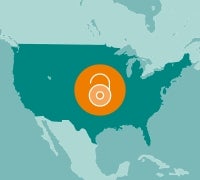Five-year agreement will deliver access to UC researchers and support sustainable open access for independent nonprofit publishers
The University of California (UC) and BioOne announced the signing of a five-year agreement to bring the flagship BioOne Complete aggregation to 9 UC campuses and the...
IOP Publishing (IOPP) and the University of California (UC) today announced a new transformative open access agreement that will accelerate publishing and expand access to high-quality research in physics and related disciplines. The three-year agreement will make it easier and more affordable for...
The UCSB Library’s Special Research Collections recently welcomed a deeply personal and historically rich donation from Farrokh Ashti Ashtiani to the U.S. and International History, Politics, Civilization and Cultures Collection. The donation, Ashtiani’s first to UCSB Library, consists of a hand-...
The University of California, Santa Barbara Library recently finalized the processing and digitization of the faculty papers of renowned theoretical physicist and string theorist Joseph Polchinski (1954–2018). The papers offer scholars and enthusiasts unprecedented access to the works of one of the...
Fri, Jun 27, 9:28 am | Library Employees
UC Santa Barbara has appointed Todd C. Grappone as University Librarian, effective July 1, 2025. Grappone was most recently an Associate University Librarian (AUL) at UCLA Library, where he has served since 2010.
“Todd’s clear vision and dynamic leadership will be an asset for our campus,” noted...
On July 1, 2025, the UC Libraries will migrate to a new Interlibrary Loan (ILL) management system. The new system will make it easier for patrons to view and manage transactions by merging the contents of My ILL Requests into My Library Account, creating a single platform for patrons to view all...
Tue, Jun 24, 3:53 pm | UCSB Reads
The UCSB Library is pleased to announce its shortlist of titles under consideration for UCSB Reads 2026, the 20th edition of the award-winning campus- and community-wide common book program. The four nonfiction titles and one fiction title explore diverse cultural, social, and scientific subjects...
UCSB Library is pleased to announce the recipients of the seventh annual Library Award for Undergraduate Research (LAUR). The six awardees demonstrated deep engagement with the Library’s collections, resources, and services while producing a scholarly or creative work. First-place winners will...
Mon, Apr 28, 9:25 am | Gifts & Donors, Special Research Collections
The University of California, Santa Barbara (UCSB) Library's Performing Arts Collection has recently been enriched by a significant donation from Andrew Farkas, a distinguished librarian, opera scholar, and biographer. With his donation, Farkas created The Enrico Caruso Jr. Collection, which...
Thu, Feb 27, 10:09 am | Faculty, Scholarly Communication & Open Access
UCSB Library is committed to open research and teaching and supports faculty in using open educational resources (OERs) to create learning experiences with fewer technical, financial, and copyright deterrents. In celebration of Open Education Week 2025 (March 3-7), UCSB Library is highlighting a...












